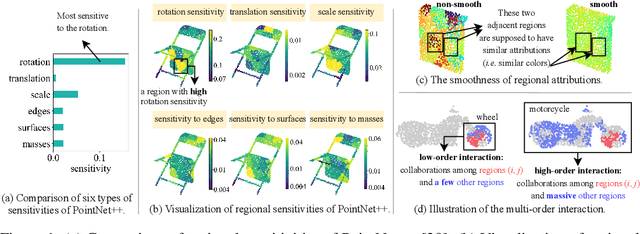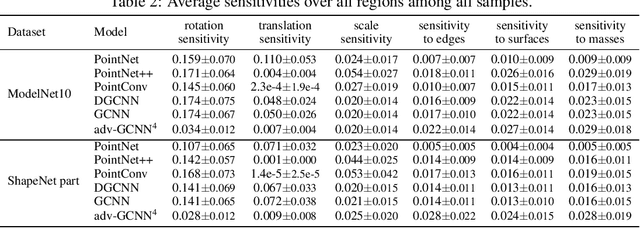Qihan Ren
Automatic Image Colorization with Convolutional Neural Networks and Generative Adversarial Networks
Aug 07, 2025Abstract:Image colorization, the task of adding colors to grayscale images, has been the focus of significant research efforts in computer vision in recent years for its various application areas such as color restoration and automatic animation colorization [15, 1]. The colorization problem is challenging as it is highly ill-posed with two out of three image dimensions lost, resulting in large degrees of freedom. However, semantics of the scene as well as the surface texture could provide important cues for colors: the sky is typically blue, the clouds are typically white and the grass is typically green, and there are huge amounts of training data available for learning such priors since any colored image could serve as a training data point [20]. Colorization is initially formulated as a regression task[5], which ignores the multi-modal nature of color prediction. In this project, we explore automatic image colorization via classification and adversarial learning. We will build our models on prior works, apply modifications for our specific scenario and make comparisons.
A Survey of Self-Evolving Agents: On Path to Artificial Super Intelligence
Jul 28, 2025Abstract:Large Language Models (LLMs) have demonstrated strong capabilities but remain fundamentally static, unable to adapt their internal parameters to novel tasks, evolving knowledge domains, or dynamic interaction contexts. As LLMs are increasingly deployed in open-ended, interactive environments, this static nature has become a critical bottleneck, necessitating agents that can adaptively reason, act, and evolve in real time. This paradigm shift -- from scaling static models to developing self-evolving agents -- has sparked growing interest in architectures and methods enabling continual learning and adaptation from data, interactions, and experiences. This survey provides the first systematic and comprehensive review of self-evolving agents, organized around three foundational dimensions -- what to evolve, when to evolve, and how to evolve. We examine evolutionary mechanisms across agent components (e.g., models, memory, tools, architecture), categorize adaptation methods by stages (e.g., intra-test-time, inter-test-time), and analyze the algorithmic and architectural designs that guide evolutionary adaptation (e.g., scalar rewards, textual feedback, single-agent and multi-agent systems). Additionally, we analyze evaluation metrics and benchmarks tailored for self-evolving agents, highlight applications in domains such as coding, education, and healthcare, and identify critical challenges and research directions in safety, scalability, and co-evolutionary dynamics. By providing a structured framework for understanding and designing self-evolving agents, this survey establishes a roadmap for advancing adaptive agentic systems in both research and real-world deployments, ultimately shedding lights to pave the way for the realization of Artificial Super Intelligence (ASI), where agents evolve autonomously, performing at or beyond human-level intelligence across a wide array of tasks.
SafeWork-R1: Coevolving Safety and Intelligence under the AI-45$^{\circ}$ Law
Jul 24, 2025Abstract:We introduce SafeWork-R1, a cutting-edge multimodal reasoning model that demonstrates the coevolution of capabilities and safety. It is developed by our proposed SafeLadder framework, which incorporates large-scale, progressive, safety-oriented reinforcement learning post-training, supported by a suite of multi-principled verifiers. Unlike previous alignment methods such as RLHF that simply learn human preferences, SafeLadder enables SafeWork-R1 to develop intrinsic safety reasoning and self-reflection abilities, giving rise to safety `aha' moments. Notably, SafeWork-R1 achieves an average improvement of $46.54\%$ over its base model Qwen2.5-VL-72B on safety-related benchmarks without compromising general capabilities, and delivers state-of-the-art safety performance compared to leading proprietary models such as GPT-4.1 and Claude Opus 4. To further bolster its reliability, we implement two distinct inference-time intervention methods and a deliberative search mechanism, enforcing step-level verification. Finally, we further develop SafeWork-R1-InternVL3-78B, SafeWork-R1-DeepSeek-70B, and SafeWork-R1-Qwen2.5VL-7B. All resulting models demonstrate that safety and capability can co-evolve synergistically, highlighting the generalizability of our framework in building robust, reliable, and trustworthy general-purpose AI.
Alita: Generalist Agent Enabling Scalable Agentic Reasoning with Minimal Predefinition and Maximal Self-Evolution
May 26, 2025Abstract:Recent advances in large language models (LLMs) have enabled agents to autonomously perform complex, open-ended tasks. However, many existing frameworks depend heavily on manually predefined tools and workflows, which hinder their adaptability, scalability, and generalization across domains. In this work, we introduce Alita--a generalist agent designed with the principle of "Simplicity is the ultimate sophistication," enabling scalable agentic reasoning through minimal predefinition and maximal self-evolution. For minimal predefinition, Alita is equipped with only one component for direct problem-solving, making it much simpler and neater than previous approaches that relied heavily on hand-crafted, elaborate tools and workflows. This clean design enhances its potential to generalize to challenging questions, without being limited by tools. For Maximal self-evolution, we enable the creativity of Alita by providing a suite of general-purpose components to autonomously construct, refine, and reuse external capabilities by generating task-related model context protocols (MCPs) from open source, which contributes to scalable agentic reasoning. Notably, Alita achieves 75.15% pass@1 and 87.27% pass@3 accuracy, which is top-ranking among general-purpose agents, on the GAIA benchmark validation dataset, 74.00% and 52.00% pass@1, respectively, on Mathvista and PathVQA, outperforming many agent systems with far greater complexity. More details will be updated at $\href{https://github.com/CharlesQ9/Alita}{https://github.com/CharlesQ9/Alita}$.
Benchmarking Multimodal Knowledge Conflict for Large Multimodal Models
May 26, 2025Abstract:Large Multimodal Models(LMMs) face notable challenges when encountering multimodal knowledge conflicts, particularly under retrieval-augmented generation(RAG) frameworks where the contextual information from external sources may contradict the model's internal parametric knowledge, leading to unreliable outputs. However, existing benchmarks fail to reflect such realistic conflict scenarios. Most focus solely on intra-memory conflicts, while context-memory and inter-context conflicts remain largely investigated. Furthermore, commonly used factual knowledge-based evaluations are often overlooked, and existing datasets lack a thorough investigation into conflict detection capabilities. To bridge this gap, we propose MMKC-Bench, a benchmark designed to evaluate factual knowledge conflicts in both context-memory and inter-context scenarios. MMKC-Bench encompasses three types of multimodal knowledge conflicts and includes 1,573 knowledge instances and 3,381 images across 23 broad types, collected through automated pipelines with human verification. We evaluate three representative series of LMMs on both model behavior analysis and conflict detection tasks. Our findings show that while current LMMs are capable of recognizing knowledge conflicts, they tend to favor internal parametric knowledge over external evidence. We hope MMKC-Bench will foster further research in multimodal knowledge conflict and enhance the development of multimodal RAG systems. The source code is available at https://github.com/MLLMKCBENCH/MLLMKC.
Towards the Dynamics of a DNN Learning Symbolic Interactions
Jul 27, 2024Abstract:This study proves the two-phase dynamics of a deep neural network (DNN) learning interactions. Despite the long disappointing view of the faithfulness of post-hoc explanation of a DNN, in recent years, a series of theorems have been proven to show that given an input sample, a small number of interactions between input variables can be considered as primitive inference patterns, which can faithfully represent every detailed inference logic of the DNN on this sample. Particularly, it has been observed that various DNNs all learn interactions of different complexities with two-phase dynamics, and this well explains how a DNN's generalization power changes from under-fitting to over-fitting. Therefore, in this study, we prove the dynamics of a DNN gradually encoding interactions of different complexities, which provides a theoretically grounded mechanism for the over-fitting of a DNN. Experiments show that our theory well predicts the real learning dynamics of various DNNs on different tasks.
Where We Have Arrived in Proving the Emergence of Sparse Symbolic Concepts in AI Models
May 03, 2023

Abstract:This paper aims to prove the emergence of symbolic concepts in well-trained AI models. We prove that if (1) the high-order derivatives of the model output w.r.t. the input variables are all zero, (2) the AI model can be used on occluded samples and will yield higher confidence when the input sample is less occluded, and (3) the confidence of the AI model does not significantly degrade on occluded samples, then the AI model will encode sparse interactive concepts. Each interactive concept represents an interaction between a specific set of input variables, and has a certain numerical effect on the inference score of the model. Specifically, it is proved that the inference score of the model can always be represented as the sum of the interaction effects of all interactive concepts. In fact, we hope to prove that conditions for the emergence of symbolic concepts are quite common. It means that for most AI models, we can usually use a small number of interactive concepts to mimic the model outputs on any arbitrarily masked samples.
Bayesian Neural Networks Tend to Ignore Complex and Sensitive Concepts
Feb 25, 2023



Abstract:In this paper, we focus on mean-field variational Bayesian Neural Networks (BNNs) and explore the representation capacity of such BNNs by investigating which types of concepts are less likely to be encoded by the BNN. It has been observed and studied that a relatively small set of interactive concepts usually emerge in the knowledge representation of a sufficiently-trained neural network, and such concepts can faithfully explain the network output. Based on this, our study proves that compared to standard deep neural networks (DNNs), it is less likely for BNNs to encode complex concepts. Experiments verify our theoretical proofs. Note that the tendency to encode less complex concepts does not necessarily imply weak representation power, considering that complex concepts exhibit low generalization power and high adversarial vulnerability.
Discovering and Explaining the Representation Bottleneck of DNNs
Nov 18, 2021



Abstract:This paper explores the bottleneck of feature representations of deep neural networks (DNNs), from the perspective of the complexity of interactions between input variables encoded in DNNs. To this end, we focus on the multi-order interaction between input variables, where the order represents the complexity of interactions. We discover that a DNN is more likely to encode both too simple interactions and too complex interactions, but usually fails to learn interactions of intermediate complexity. Such a phenomenon is widely shared by different DNNs for different tasks. This phenomenon indicates a cognition gap between DNNs and human beings, and we call it a representation bottleneck. We theoretically prove the underlying reason for the representation bottleneck. Furthermore, we propose a loss to encourage/penalize the learning of interactions of specific complexities, and analyze the representation capacities of interactions of different complexities.
Interpreting Representation Quality of DNNs for 3D Point Cloud Processing
Nov 05, 2021



Abstract:In this paper, we evaluate the quality of knowledge representations encoded in deep neural networks (DNNs) for 3D point cloud processing. We propose a method to disentangle the overall model vulnerability into the sensitivity to the rotation, the translation, the scale, and local 3D structures. Besides, we also propose metrics to evaluate the spatial smoothness of encoding 3D structures, and the representation complexity of the DNN. Based on such analysis, experiments expose representation problems with classic DNNs, and explain the utility of the adversarial training.
 Add to Chrome
Add to Chrome Add to Firefox
Add to Firefox Add to Edge
Add to Edge